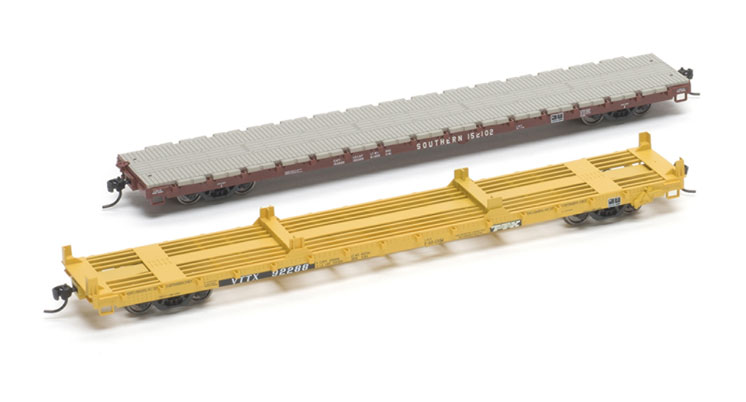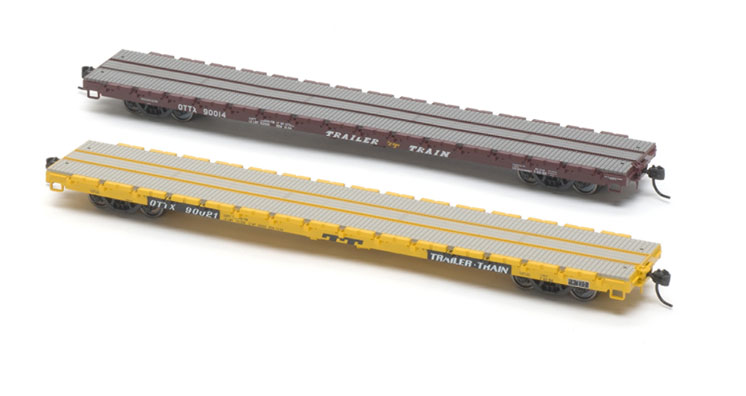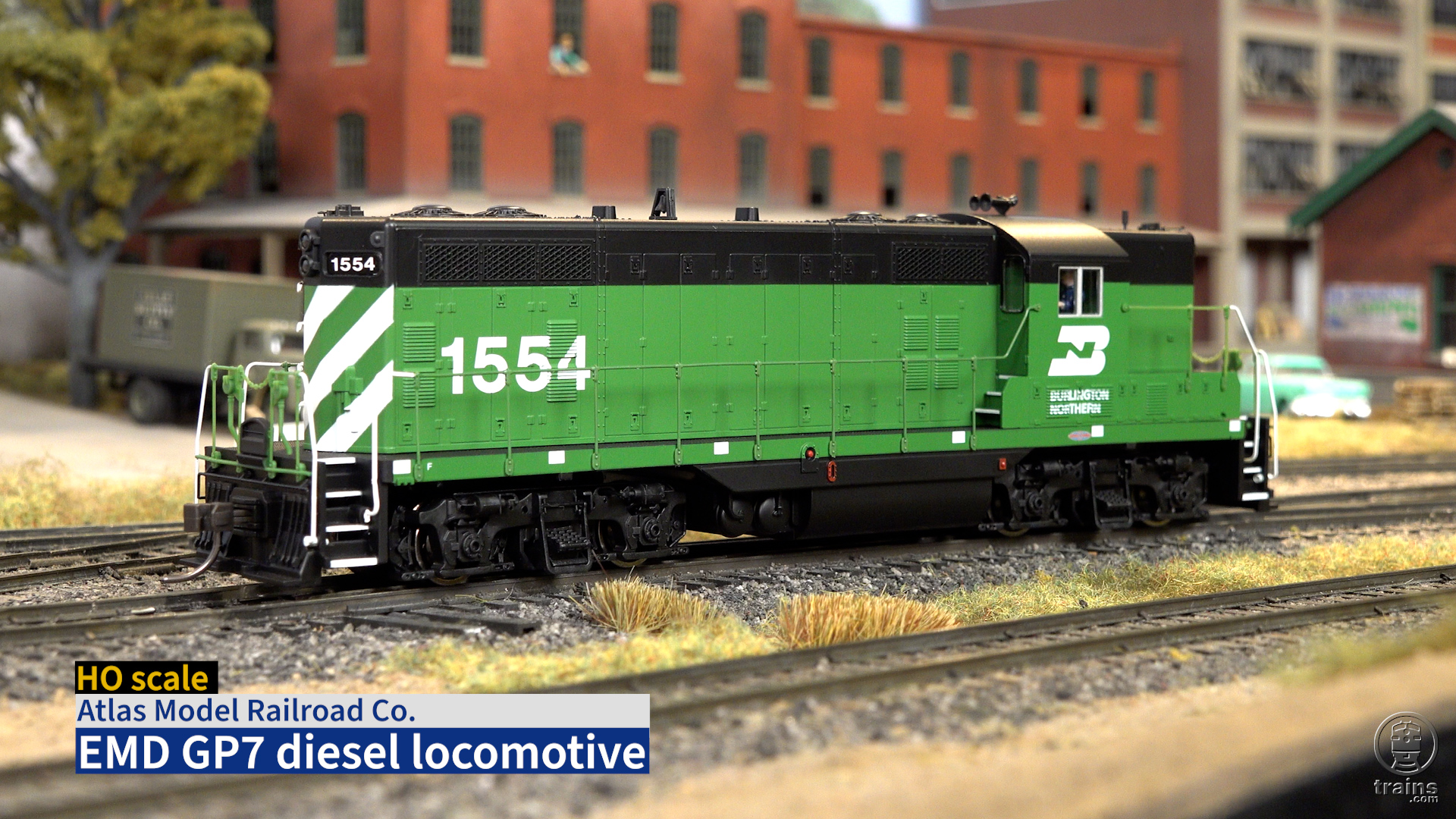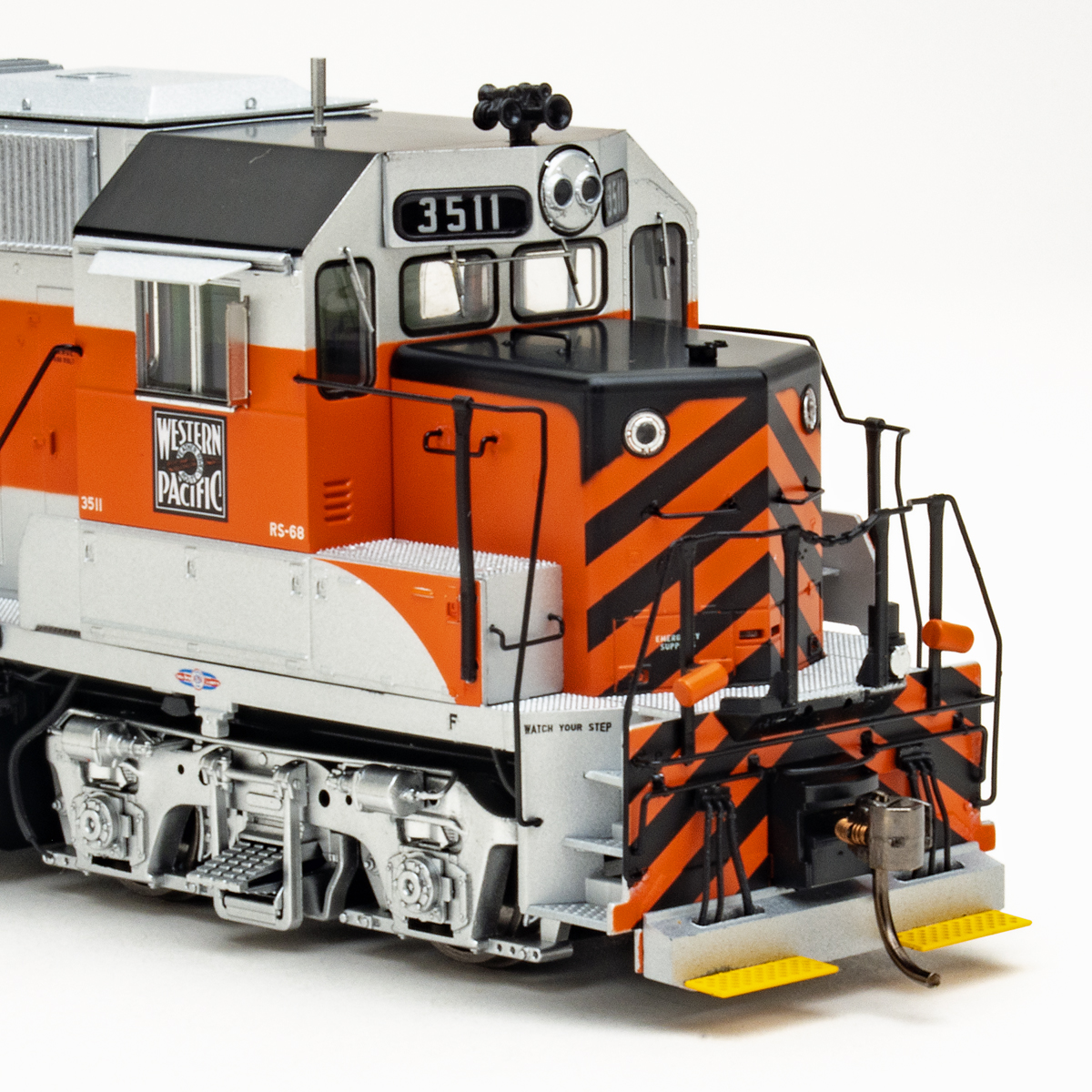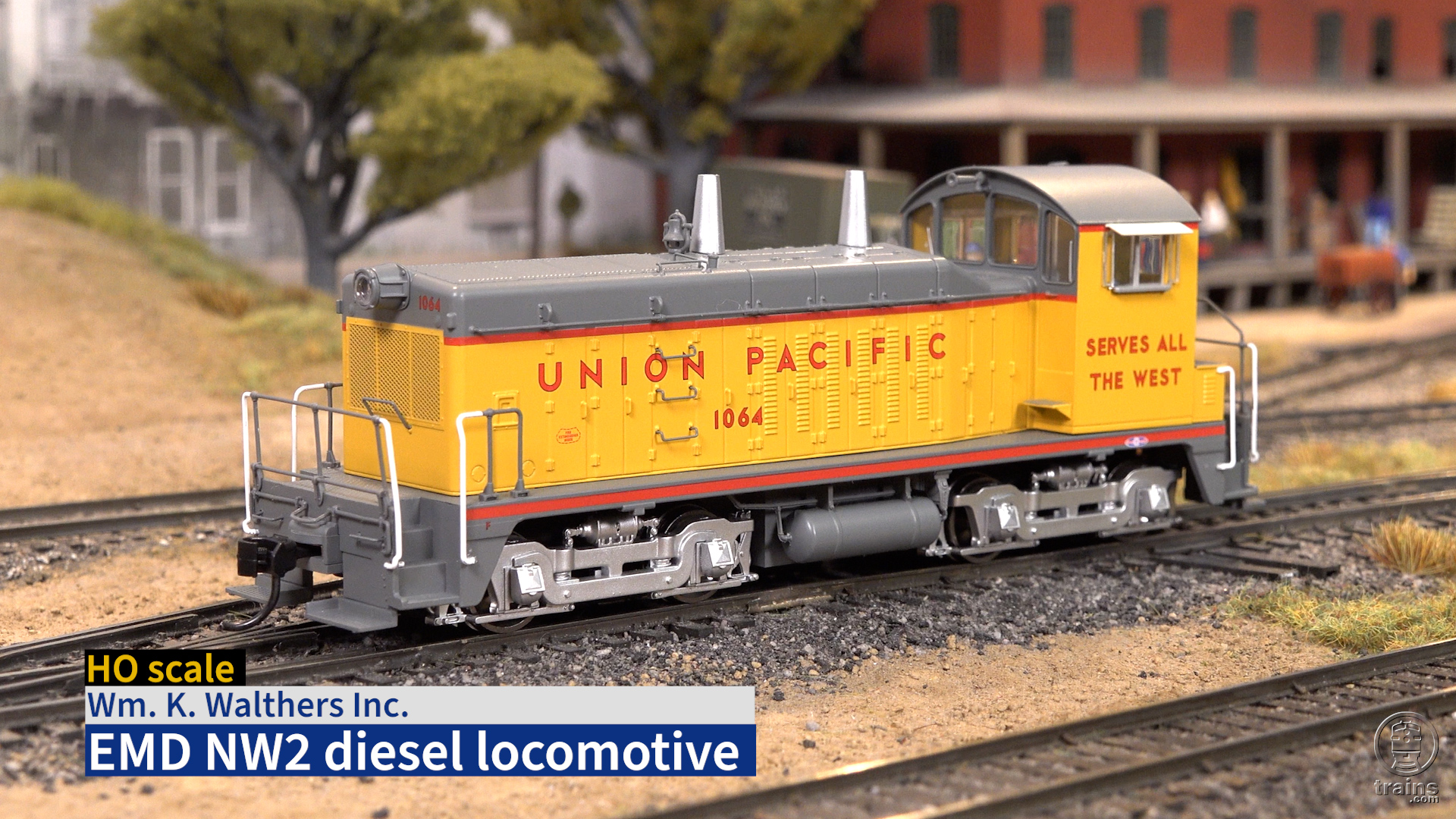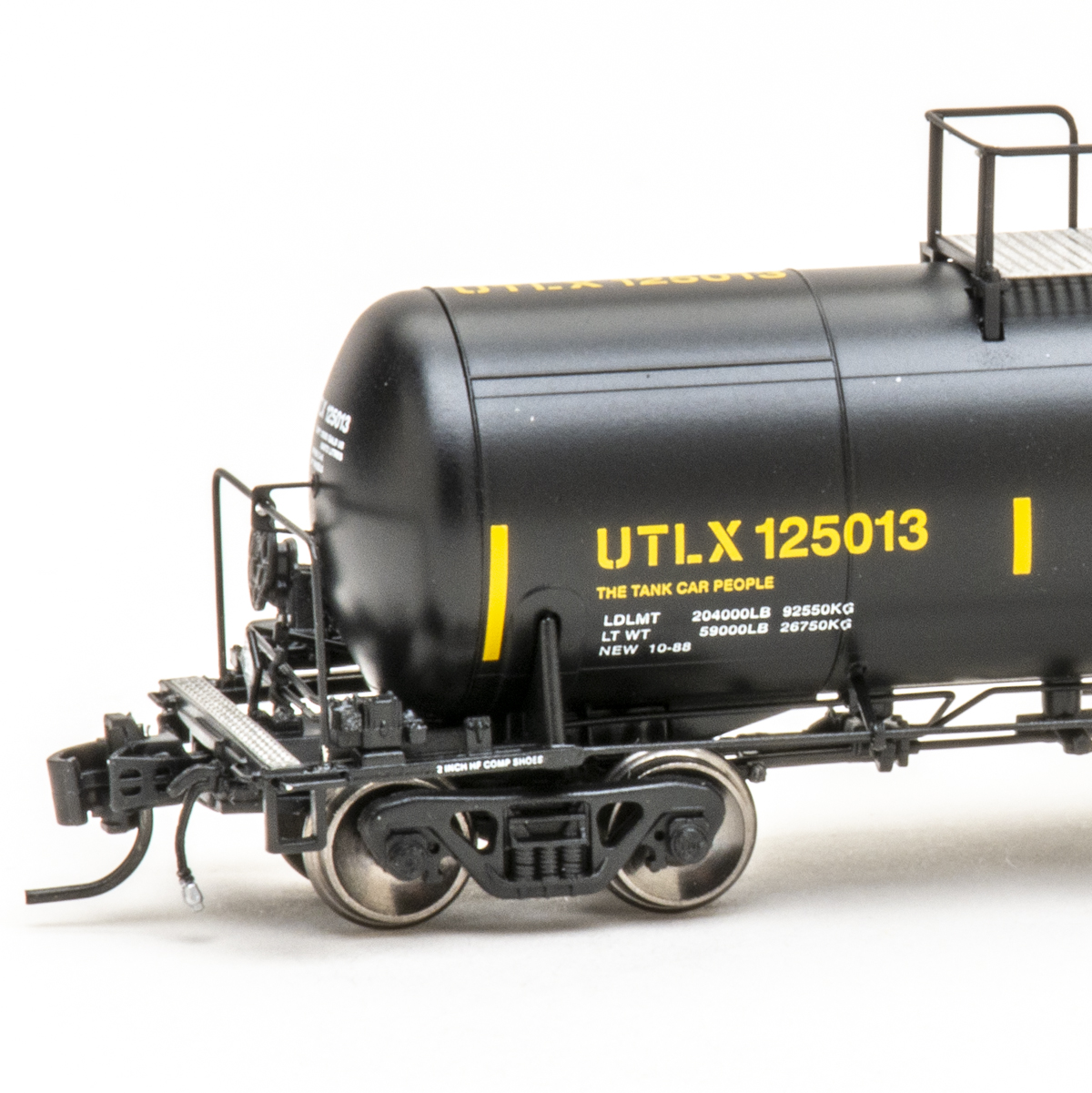A flatcar appropriate for North American railroads set anywhere from the mid-1960s to today and suitable for a variety of ladings is being offered in HO scale by Wm. K. Walthers, Inc. The 60-foot Pullman-Standard flatcar is newly tooled, finely detailed, and offered with a choice of three deck configurations for different kinds of loads.
The WalthersMainline cars feature molded plastic decks, underframes, and details; cast-metal spines; separately applied brake gear; see-through stake pockets; and brake wheels or handles appropriate to the prototype. They’re equipped with metal ProtoMax knuckle couplers and blackened metal wheelsets.
Pullman-Standard built more than 4,000 of these flatcars starting in the mid-1960s. Depending on their fittings, they could carry farm machinery or other heavy equipment; logs; pipe; poles; and steel plates, coils, girders, or ingots, to name just a few. Many are still in revenue service today.
Once over. Our four samples covered four paint schemes (Southern Ry., VTTX, and OTTX in red and yellow) and all three deck styles. The Southern Ry. car had a plain wooden deck for general service. The OTTX cars had a farm machinery deck, with slots for chain tie-downs in the middle of the deck. The VTTX car was visually the most interesting, with container pedestals and a see-through slat deck that left the trucks and brake gear visible from above. Weathering this car, with dirt and dust thrown up through the open deck by the wheels, would be a fun challenge.
The VTTX car’s four sets of pedestals are arranged to let the car carry three 20-foot containers. One of the sets of pedestals is removable, allowing loading of one 20-foot and one 40-foot container, just like the prototype. The car came with a replacement piece to represent the pedestal folded flat.
The paint on all four was smooth, even, and opaque. The printing was crisp, with even the smallest lettering in the COTS (Clean, Oil, Test & Stencil) panel legible under magnification.
The cars matched dimensions and prototype photos published in the Trailer Train Company Equipment Guide and Directory of General Merchandise Cars and Commodities, both from TTX.
On the test bench. The couplers were mounted .02″ low per National Model Railroad Association (NMRA) Standard S-2, close enough to be corrected with a pair of truck bolster washers. The NMRA Recommended Practice (RP)-25 contour wheels were all in gauge.
The cars were considerably underweight based on NMRA RP 20.1, but that’s to be expected for a flatcar, which has few places to conceal weight. A load would be an easy way to bring the cars up to the NMRA-recommended weight.
As long as these cars are, they would look better on broad curves. But when I tested them on our 4 x 6-foot Eagle Mountain project layout, the cars had no difficulty traversing its 19″ radius curves and no. 5 Peco turnouts.
Any HO scale layout set from the mid-1960s to today could use one or more of these cars. A detailed farm machinery load or some well-weathered containers would make one of them a standout.
Manufacturer
Wm. K. Walthers Inc.
5701 W. Florist Ave.
Milwaukee, WI 53218
www.walthers.com
Road names: Southern Ry.; Trailer Train (OTTX or VTTX reporting marks); Atchison, Topeka & Santa Fe; Elgin, Joliet & Eastern; and undecorated.
Era: mid-1960s to present
Features
• Blackened metal wheelsets, in gauge
• ProtoMax metal knuckle couplers (.02″ low per NMRA S-2)
• Prototype-appropriate brake gear
• Removable container pedestal (VTTX)
• Three prototype-specific deck variations
• Weight: open deck, 2.5 ounces (2.5 ounces too light according to NMRA RP-20.1); solid deck, 2.8 ounces (2.2 ounces light)





